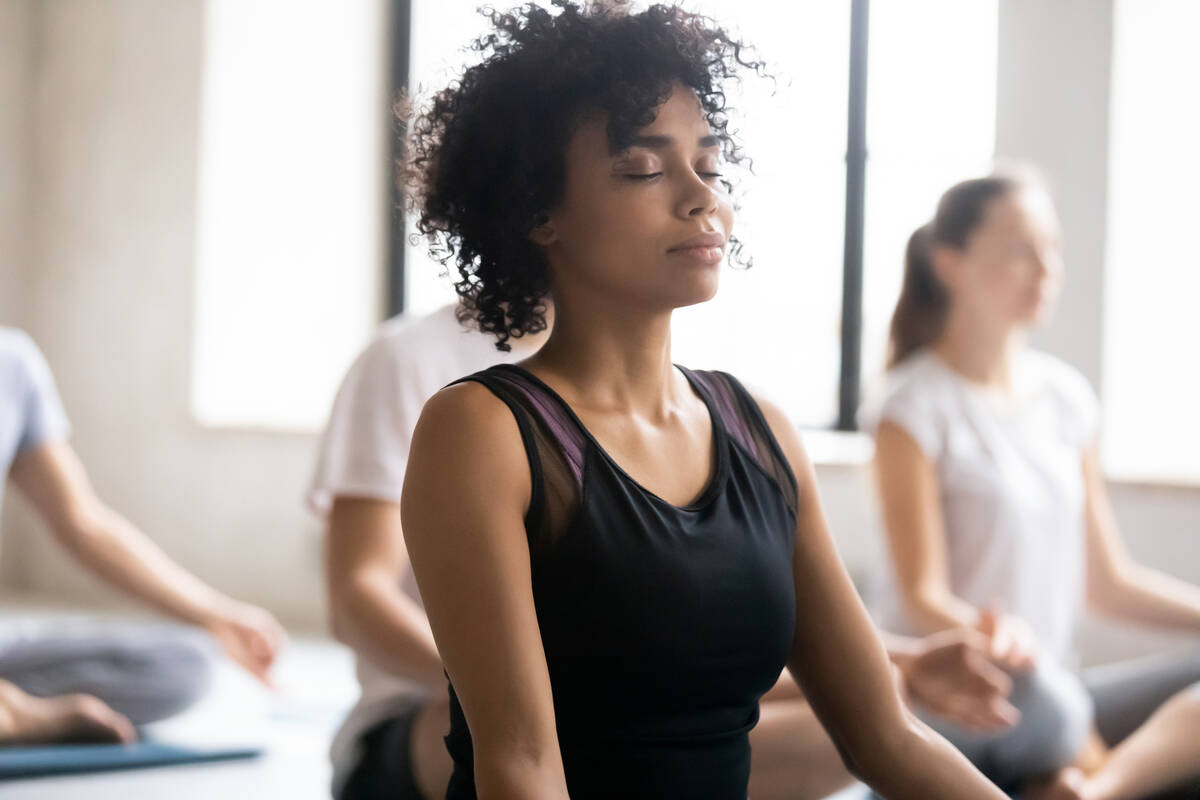Can mindfulness meditation really reduce stress?
Question: I’ve been hearing a lot about mindfulness meditation lately and how it can help reduce stress and improve overall well-being. But I’m a bit skeptical and don’t really understand how sitting still and doing nothing can make such a big difference. I have a busy and active lifestyle, and the idea of spending time just focusing on my breath or thoughts sounds boring. Are there real benefits of mindfulness meditation and how it can realistically fit into a fast-paced life like mine?
Answer: It’s common to feel skeptical about an activity that promises quick and easy stress relief. Yet mindfulness meditation promises just that. It’s a fast and easy way to reduce stress wherever you are.
Mindfulness meditation is the practice of purposefully being aware of and focusing your attention on the present moment. Mindfulness allows you to be in tune with your experience — right now in this moment — and to explore with curiosity whatever sensations, thoughts and emotions are present without expectations or judgment.
During meditation, you focus your attention and eliminate the stream of jumbled thoughts that may be crowding your mind and causing stress. This focus can result in enhanced physical and emotional well-being.
Many people may think of mindfulness meditation as “sitting on a pillow, being still, with eyes closed.” This may work for some, but there are many ways to practice mindfulness meditation.
Practicing mindfulness involves using breathing methods, guided imagery and other strategies to relax the body and mind to help reduce stress.
To try focused breathing meditation, sit down, take a deep breath and close your eyes. Focus on your breath as it moves in and out of your body. Sitting and breathing slowly for even just a minute can help.
As you start meditating, try these structured mindfulness exercises:
Body scan meditation: Lie on your back with your legs extended and arms at your sides, palms facing up. Focus your attention slowly and deliberately on each part of your body, in order, from toe to head or head to toe. Be aware of any sensations, emotions or thoughts associated with each part of your body.
Sitting meditation: Sit comfortably with your back straight, feet flat on the floor and hands in your lap. Breathing through your nose, focus on your breath moving in and out of your body. If physical sensations or thoughts interrupt your meditation, note the experience and then return your focus to your breathing.
Walking meditation: Find a quiet place 10- to 20-feet long and walk slowly. Focus on the experience of walking, being aware of the sensations of standing and the subtle movements that keep your balance. When you reach the end of your path, turn and continue walking, maintaining awareness of your sensations.
Often, mindfulness meditation is recommended as part of a comprehensive treatment for physical and mental health conditions. It’s considered a type of mind-body complementary medicine. You can incorporate mindfulness meditation into your busy routine to improve your overall health.
There are many benefits of mindfulness meditation engaging the brain. Think of it as a form of brain exercise. Just as physical exercise keeps your body healthy, mindfulness meditation keeps your brain fit. Research has shown that just five to 15 minutes of daily meditation is all you need to begin experiencing benefits.
After decades of research into the practice, these benefits have been found to include an increase in:
Cognitive flexibility
Diabetes control
Emotion regulation
Empathy
Focus and attention
Immune system response
Memory
Positive emotions
Positive relationships
Relaxation
Self-compassion
Self-esteem
The practice also affects many negative physical and mental symptoms, including decreases in:
Addictive behaviors
Anger and hostility
Anxiety
Burnout
Depression
Emotional reactivity
Insomnia
High blood pressure
Need for pain medications
Physical pain
Post-traumatic stress disorder symptoms
Stress
Mindfulness is a supportive strategy to help manage many health issues. It pairs well with other medical treatments and counseling. It’s a simple strategy that doesn’t require a prescription or special equipment and can be practiced anywhere.
Talk with your health care team about incorporating mindfulness meditation into your life and see if it makes a difference in your health and general sense of well-being.
Joel Bobby is a licensed independent clinical social worker with the Mayo Clinic Health System in Austin, Minnesota.




























